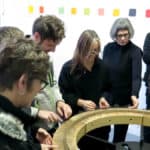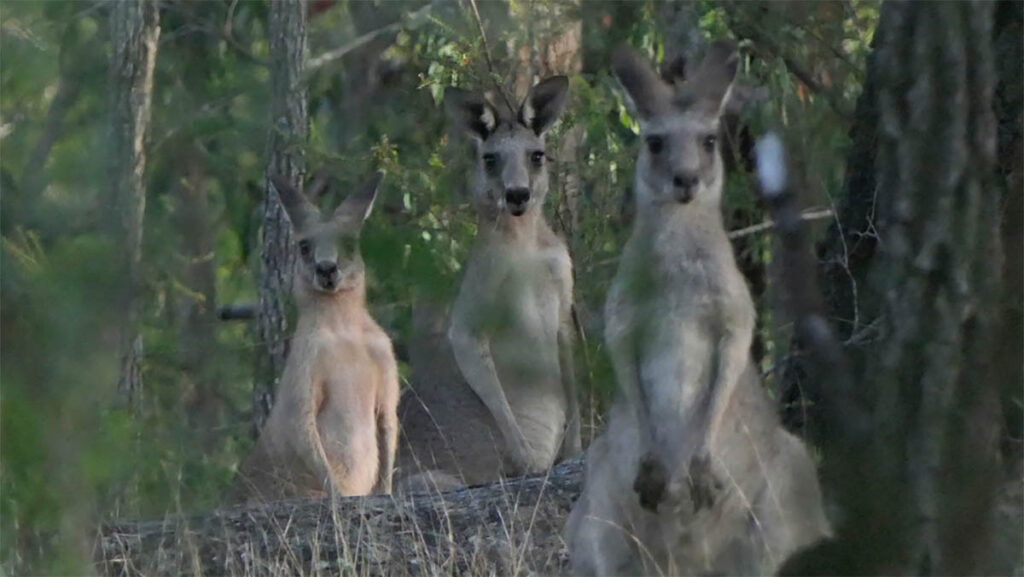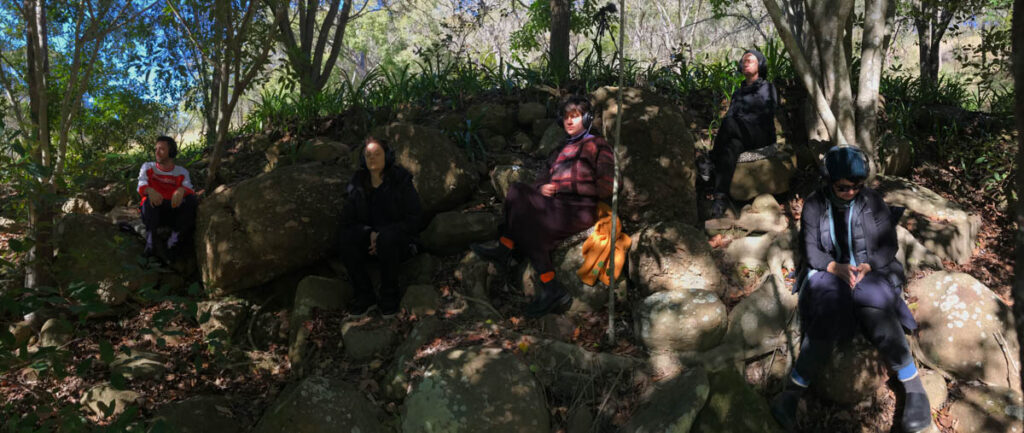
Pauline Oliveros (centre) leading a Deep Listening workshop at the Incubate Festival, Wilhelmina Park, Tilburg, Netherlands. 2014.
photo: William van der Voort
Gary Warner writes about ways of achieving quietude such as the Center for Deep Reading.
Influential musician, composer and sound theorist Pauline Oliveros said the more she listened, the more she learned to listen. She considered hearing and listening to be mysterious, deeply subjective existential phenomena. The ears hear, the brain listens, and the body experiences sound. She talked about different sound registers: making, imagining, listening to present and remembering past sounds. She is credited with coining the term “Deep Listening” and developing the idea into a methodology with applications to various disciplines, including field recording, music, education, community building and well-being.
Hearing is involuntary, a sense that happens at a physiological level. Unlike some other mammals, particularly herbivores, we humans cannot focus our ears by swivelling them to make a sonic scan of our surroundings. We need to move our heads or reposition our bodies and are entirely capable of ignoring most of what we hear, which is essential so as not to be overwhelmed by sensory input.
Listening applies attentive selection to hearing, engaging thought, mental acuity and affective response to carry sound to centre stage of our internal sensory theatre. The well-known “cocktail effect” demonstrates this capacity. We can clearly understand someone we’re talking with in a noisy, crowded room full of others doing the same thing. Yet, if presented with an audio recording of the same environment, we’re unable to discern an intelligible word.
Sound plays a significant part in cultural identity, the ecological uniqueness of place and the sonic signature of built-form spaces. Think of hospitals, museums, airports, shopping centres, and rail stations, all with characteristic soundscapes, part-engineered, part-incidental, and constantly evolving with changing technologies, materials, and architectural and sociological framings.
In our crowded urban spaces, we must endure a lot of sonic generation by other people, our machines and systems, and there can be health impacts from constant exposure to this noise. When we dream of respite, we long for peace and quiet. Not dead silence, but living quietude. Sound dialled down, sparser, with lower energy and perhaps including mellifluous entanglements like birdsong or gently running water. Sacred spaces—most of the time—tend to be places of quietude, whether cathedral, mosque, temple, shrine, forest or cave.
There are powerful, awe-inspiring sounds less frequently encountered that deliver a fleeting sense of the sublime, the terrifying, the wondrous. The “natural world” offers thunderstorms, volcanic eruption, cyclone winds, a majestic tree fall, avalanche, waterfall, powerful surf, vocalisations of animals with infrasonic registers, such as elephants and tigers, and the far-carrying calls of deep ocean whales. Human technologies and social drives offer others: trains, planes and automobiles, the goal-score roar of a stadium crowd, a full-flight symphony orchestra, bombastic missile bombardment, a SpaceX launch.
And then there’s that particular category of sound, music: our human shaping of generated sounds and silence into time-based patterns and forms in all its bewildering diversity.
But most of the sounds we encounter might be categorised as incidental. It happens around us; we hear it but infrequently listen. Writer and teacher Nick Keys devised a series of residential retreats he calls The Centre for Deep Reading. Lovers of reading gather in a large rural homestead on a forested property for a week or more to read and talk about books and reading together. Nick asked friends and colleagues to offer performances or experiences to the CDR gathering, which provided an opportunity for me to develop a Deep Listening scenario. In the forest near the homestead, I set up a stereo microphone recorder and sent its live signal via long cables to five pairs of high-quality over-ear headphones. Participants were asked to sit on cushions on the forest floor for 20 minutes to listen to the amplified sound of the forest. People reported being spellbound by the unusual sonic encounter.
The following year I was ready to repeat the experience, but frequent unpredictable storms alternating with passages of bright sunshine mitigated against a forest setting. I set up the microphone under the deep eaves of the building, facing out to forested hills and farmland, and cabled back to five headphones inside the main living/reading room, with its fireplace and comfy furniture. The microphone remained “open” so people could “go under” the headphones whenever they wanted to. Many readers sat for long periods under headphones, reading to a soundtrack of whatever incidentally occurred outside the room. The headphones provided a kind of sonic cocoon, and this time there was a slight disjunct between the listener’s location inside and the amplified sound outside. Again, the feedback was this experiential re-contextualisation of hearing awakened listeners to the peculiar beauty of “ordinary” sound.
In my work teaching expanded drawing in an art school, I’ve developed workshops to focus students’ attention on the sounds of drawing, to purposefully shift from hearing to listening. Here’s an introductory exercise I do with students. We go outside the classroom without any electronic devices to somewhere on campus where everyone can sit a little apart from each other. Everyone agrees to sit for 20 minutes without speaking or moving about too much.
The simple instruction is to sit and actively listen, imagining your zone of hearing expanding like a limitless balloon reaching out to notice even distant sounds. All sounds that occur in these 20 minutes surrounding this locus are considered equivalent: the garbage truck reversing and the magpie singing are each legitimate sonic events. There is no need to identify sounds or qualify responses to them as they occur. We allow hearing to become attentive listening in flow. Close your eyes if you like. Cup your hands behind your ears to gently amplify sounds if you want.
We notice it takes minutes for the sound of an unseen plane to traverse above us while a parakeet screeches through in seconds. Small close sounds, like a cricket chirping, a dripping tap, or someone walking over gravel nearby, become pronounced punctuations. The drone of traffic becomes a Doppler rhythm metered by traffic-light changes. Distant sounds usually ignored become like flecks of scattered colour.
At the end of the exercise, we return to the classroom and discuss the experience. Many students report they’ve never done anything quite like this and are surprised at how affective an experience it is to simply sit and listen. It’s a form of permission to stop, drift, set anxieties aside for a while and purposefully listen to the world’s sounds as they arise and travel in the surround-sound space of our aural sensorium, fade or persist.
With their hearing newly sensitised, I ask the students to draw in response to the experience.
Try it for yourself as a grounding exercise, a mindful way to start or end the day and excellent practice for developing a sense of deep listening. As Pauline Oliveros recommended, tuning in to the compositional qualities of chance sonic layering and appreciating the unique acoustic signature of where you happen to be can be good for the spirit.







